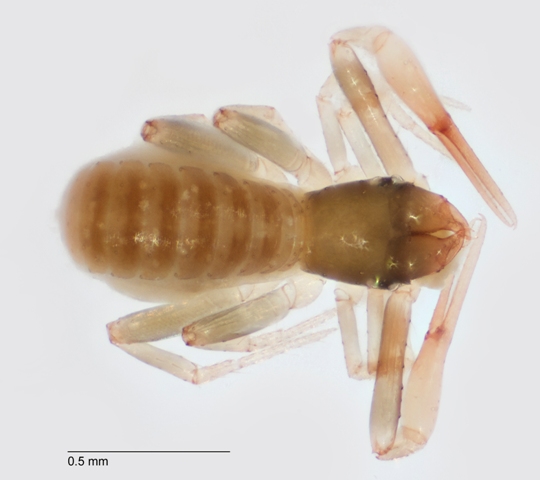Key to Australian Freshwater and Terrestrial Invertebrates
Phylum Arthropoda, Subphylum Chelicerata
Common name: chelicerates, arachnids
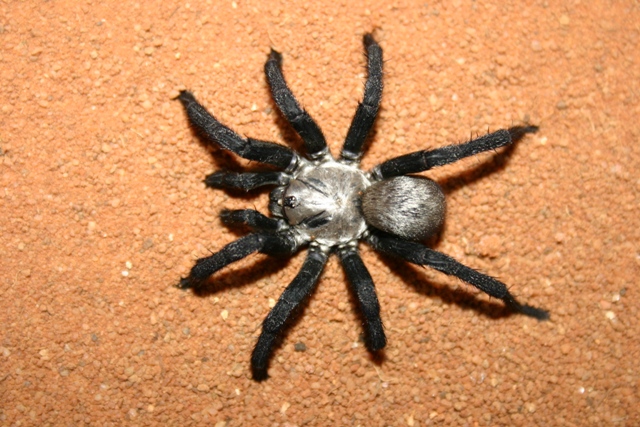
Araneae - Idiomatta sp. male
Image credit: Mark Harvey � Western Australian Museum
used with permission
Image credit: Mark Harvey � Western Australian Museum
used with permission
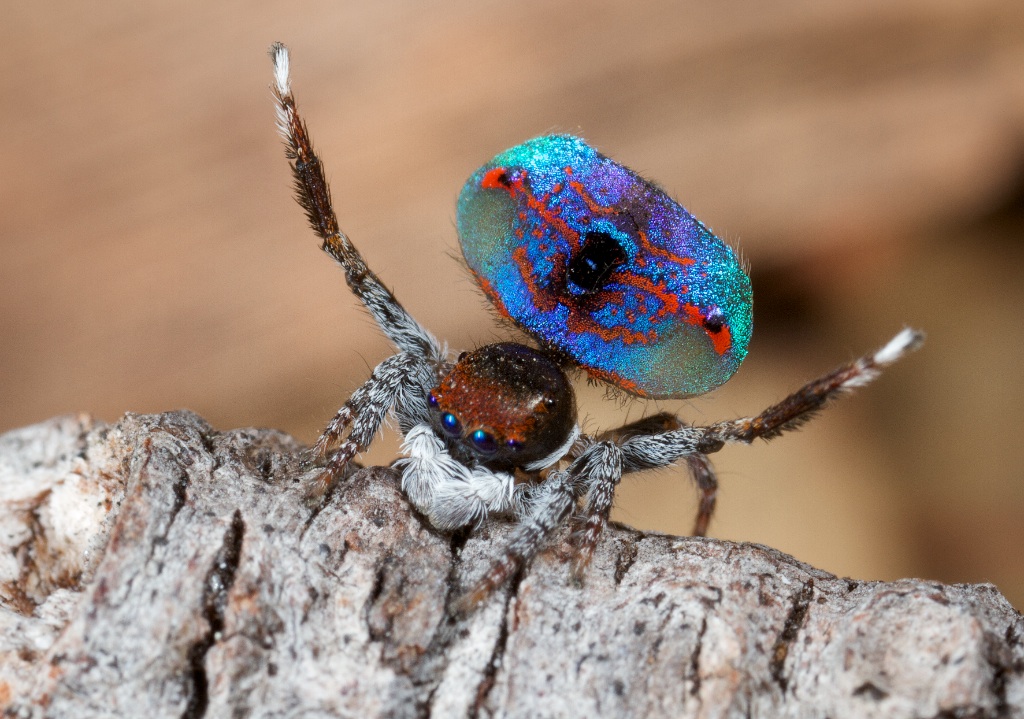
Araneae - Peacock spider
Image credit: Jurgen Otto
used under a Creative Commons Attribution-NonCommercial-NoDerivs license
Image credit: Jurgen Otto
used under a Creative Commons Attribution-NonCommercial-NoDerivs license
 from the Kimberley dorsal body.jpg)
Amblypygi - Charonsp. (Charontidae) from the Kimberley
Image credit: Mark Harvey � Western Australian Museum
used with permission
Image credit: Mark Harvey � Western Australian Museum
used with permission
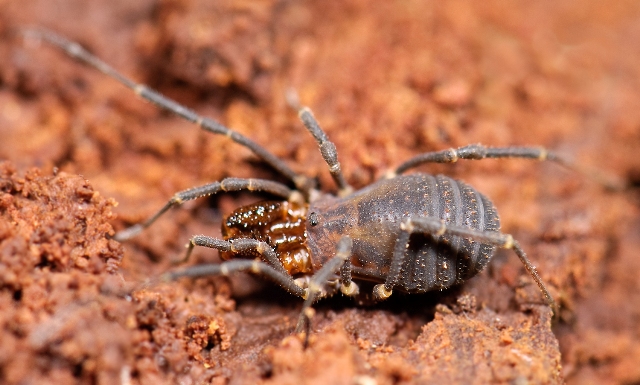
Opiliones - Triaenonychini
Image credit: Marshal Hedin
used under a Creative Commons Attribution-NonCommercial license
Image credit: Marshal Hedin
used under a Creative Commons Attribution-NonCommercial license

Scorpiones - Urodacus armatus
Image credit: Mark Harvey � Western Australian Museum
used with permission
Image credit: Mark Harvey � Western Australian Museum
used with permission
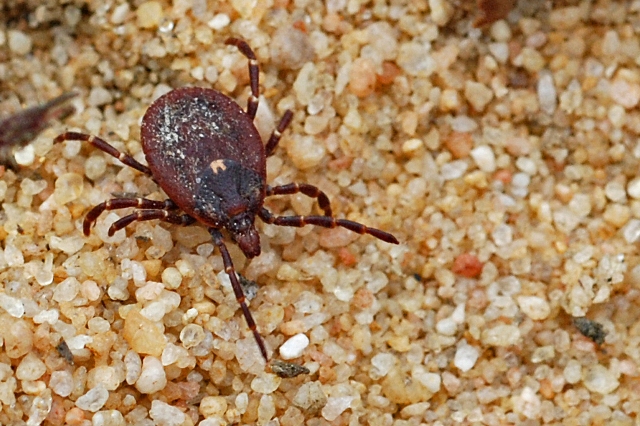
Parasitiformes - Kangaroo tick
Image credit: Jean and Fred Hort
used under a Creative Commons Attribution-NonCommercial license
Image credit: Jean and Fred Hort
used under a Creative Commons Attribution-NonCommercial license
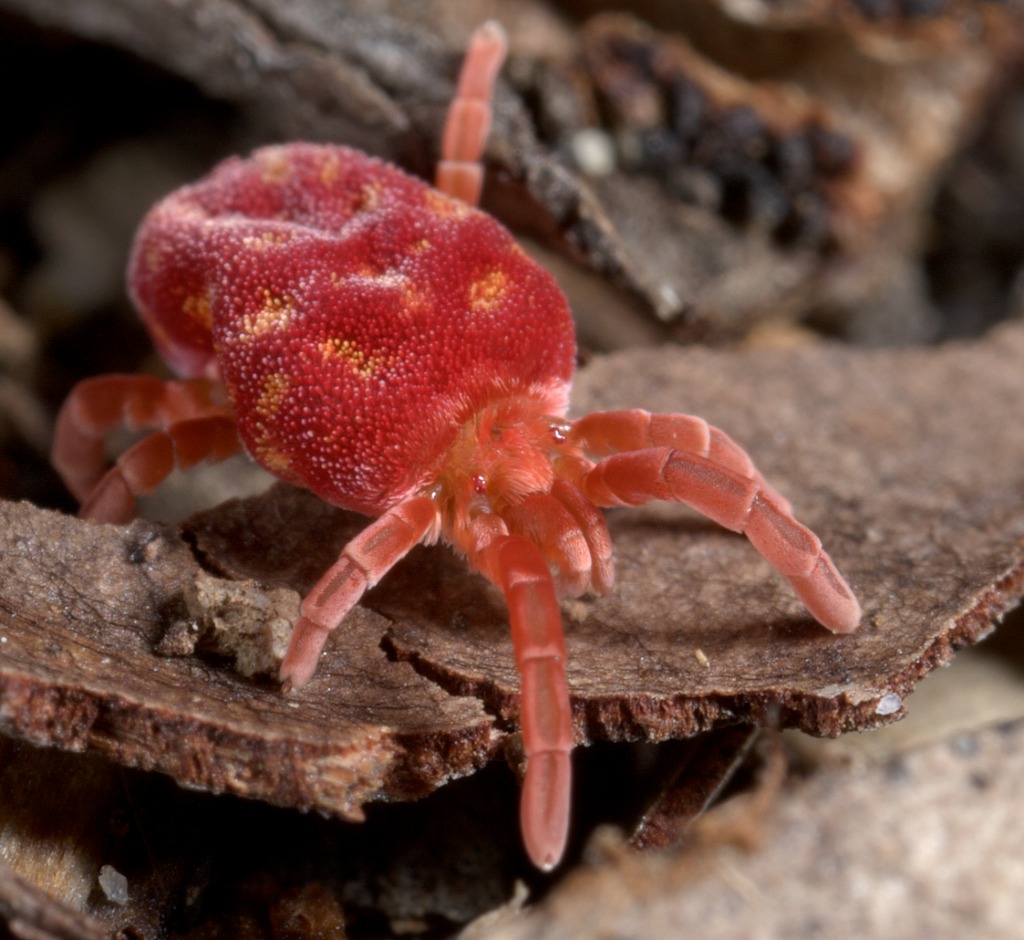
Acariformes - Velvet mite
Image credit: Jurgen Otto
used under a Creative Commons Attribution-NonCommercial-NoDerivs license
Image credit: Jurgen Otto
used under a Creative Commons Attribution-NonCommercial-NoDerivs license
References and further information
Atlas of Living Australia: Chelicerata
Encyclopedia of Life: Chelicerata
Tree of Life: Arthropoda: Chelicerata
